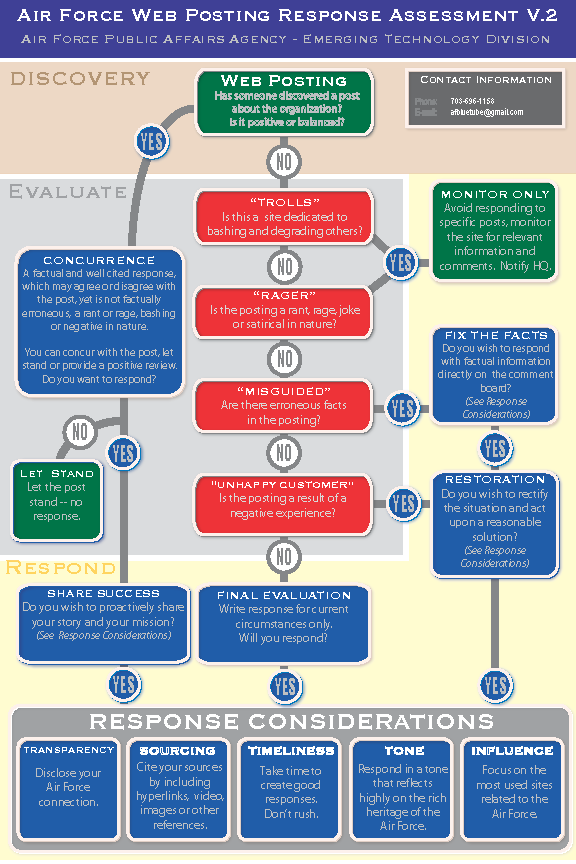Selling business software can be a dry argument. But sometimes a unique twist on the hero’s journey makes all the difference. I am loving this ad for Teamwork.com – casting clients as the evil villain and the agency team as the struggling hero seeking a resolution.
Author: Gavin
Unleashing the power of storytelling
In the ever-evolving landscape of marketing, one strategy has stood the test of time: storytelling. A good story has the power to captivate, inspire, and connect on a deep emotional level, which means that storytelling has become an essential tool in the modern marketer’s arsenal.
Storytelling is about creating a narrative that resonates with your audience. It is about crafting a compelling story that not only engages, but also evokes emotions and leaves a lasting impression. Take for instance the powerful Nike campaign featuring Colin Kaepernick. By telling the story of a controversial figure who stood up for what he believed in, Nike managed to connect with their audience on a profound level. They tapped into the collective consciousness, sparking conversations and igniting a movement that went far beyond selling shoes.
Visuals play a pivotal role in storytelling, as they have the ability to transport us to different worlds and evoke a range of emotions. The “Share a Coke” campaign by Coca-Cola is a prime example of using visuals to create a memorable story. By personalising their product with individual names and encouraging people to share their stories, Coca-Cola fostered a sense of belonging and nostalgia, making their brand a part of people’s personal narratives. And who can go past a can of coke called “Gavin”? After all – that drink literally “had my name on it”.
Where once social media was digital’s poor cousin, it has now become an indispensable platform for storytelling. The ALS Ice Bucket Challenge shows how an online campaign can spread like wildfire, harnessing the power of social media to create a global phenomenon. By inviting people to share their personal stories and experiences, the ALS Association successfully raised awareness and funds for a worthy cause, all through the power of storytelling on social media.
So, how can you create an effective storytelling campaign for your brand? It starts with understanding your target audience. What are their values, aspirations, and pain points? Where they overlap or align to your corporate or brand values, you can really activate a campaign. By tapping into these insights, you can tailor your story to resonate with your audience on a deeper level.
In a survey conducted by Sprout Social, 55% of consumers stated that they are more likely to trust a brand if it tells a compelling story. When brands can convincingly and authentically create stories, there’s a trust bonus that can be unlocked.
With that awareness, now you can focus on creating a unique story that sets your brand apart. What makes your brand special? What is your unique selling proposition? Why do your values matter and why should your customers care? By highlighting these aspects in your storytelling, you can create a narrative that is distinct and memorable.
Finally, choose the right channels to reach your audience. Whether it’s through social media, video marketing, or immersive experiences, select the platforms that align with your brand and have the potential to amplify your story to a wider audience.
By creating narratives that touch hearts and minds, brands have the power to forge lasting connections with their customers. Perhaps more importantly, by embracing the power of storytelling, you can unleash your own creativity, and bring your brand to life in a meaningful way.
About the re:invention series
In this series I am exploring the new ways of using technology, storytelling and an acute interest in humans to imagine the possible futures we can live and work in, purposefully.
Strategy Then and Now – Lessons for strategists in an AI-activated world
When we are constantly working, grinding, learning and delivering our work, it’s easy to forget to stop, reflect and share our thinking. So it was great this week to take a moment to pause and reflect on some of my strategy work, sharing with the team over at Sling & Stone.
Brian Giesen had asked that we think about how we used to develop strategy, and then share some more recent insights into how we develop strategy now, in light of prolific data and artificial intelligence. Without naming names, I thought I’d share the key points of how I have found the practise of strategy has changed over the last couple of years.
Customer foundations are essential: I always say, that everything starts with the customer. And this won’t change. After all, it is pretty rare that a bot will identify and conduct a trade/purchase (unless, of course, you are offering shares on the share market). And this means that you have to find a way to capture the attention of an audience and trigger their engagement and action. So when it comes to developing strategy, it’s your job to ensure that your understanding of your client’s customer is the same customer that your client is seeking. Keep asking and drilling your clients on their understanding of their customers.
- Then vs now: Not a lot has changed here except that we now have better data at our fingertips. Use data to validate your position and play this back to your clients. Ask them to explain any gaps or suprises.
Prototype your client’s customers: If your clients can’t robustly describe their ideal customer profiles, you’ll need to invest in doing so. Sometimes clients do understand their customers through the experience of working with them. But they may not have documented the nuances. Use expert interviews to ask questions, identify triggers and validate your assumptions. Create personas that you can use as models and then conduct interviews with your clients and their sales teams to validate the motivations, triggers and profiles.
- Then vs now: There are plenty of frameworks for customer profiling. Choose one that suits your needs and dive deeply. Use AI to accelerate your profiling based on known archetypes and refine through several iterations. Then step away and let your creative mind chew over the nuances. Remember, you are envisioning future use cases and AI is based on what we already know – not what we have yet to experience.
Map the competitive landscape: Who are the competitors in the industry? And how do you describe them? I like to spend some time thinking through the commonalities of competitors and plot them on a quadrant chart. As a strategist, try to identify both commonalities and areas of differentiation and use these to analyse each of the competitors and plot them on the chart. Deep dive into each competitor to understand their:
- Underlying narrative
- Visual storytelling
- Palette and persuasive intent
- Over-arching message
- Super powers.
- Then vs now: You’ll need a real-time AI to assist, but generate an analysis of the competitors and the industry trends. Brainstorm (with your team) the different lenses you are considering for the axes and iteratively plot out the competitors and see what emerges. Use your judgement (and the insights from the previous steps) to select the plotting and seek out the clear space available to your client.
Artificial intelligence is yet another technology that has emerged from the digital and social media world. But it’s not a solution or a replacement for solid strategic thinking. It’s a tool to aid and guide your efforts. Have AI do your grunt work, and then spend your time (and budget), developing deep, motivating and lasting insights to deliver the outcomes your clients expect – and need.
A ChatGPT Beer Worth Drinking?
Is artificial intelligence going to take all our jobs? One beer maker decided to dive deeply into the tech world to generate the recipe for a never before seen new beer. But like any innovation, it’s not just a simple thing to turn a generated recipe into an actual beer. There is actual, physical work to be done. Ingredients to source. Brewing and adjustments to be made.
But what is fascinating is how far the Big Shed team went with this recipe – not only did they make the beer, they engaged a beer judge to assess it. What mark did the beer get? Was it worth drinking?
You’ll need to watch the video below to find out. Thanks to Porters Pyrmont Cellars for the story.
Don’t Feed the Trolls – How to Respond on Social Media and Keep Your Cool
Some years ago, the US Airforce Public Affairs Agency released a handy process that could be followed when responding to social media responses. It’s still a great tool to guide social media, communications managers and business owners. But more importantly, it’s a tool that we can use as individuals.
There is one tried and tested rules – simply don’t feed the trolls. But if you find yourself being triggered by a comment:
- Don’t engage: Trolls want attention, so the best way to deal with them is to ignore them. Don’t respond to their comments or messages and don’t give them the satisfaction of knowing they’ve gotten to you.
- Report them: If the troll’s behaviour is abusive, threatening or violates the social media platform’s community guidelines, it’s important to report their account. This can help prevent them from harassing others in the future. Of course, platforms are uneven in their responsiveness.
- Stay calm and composed: Trolls thrive on conflict and drama. Don’t get into heated arguments and try to remain calm and composed. Responding with kindness and empathy can also help defuse the situation.
- Use humour: Sometimes, responding to a troll with humour can be an effective way to shut them down. It can also help lighten the mood and prevent the situation from escalating.
- Block or mute them: If the troll continues to harass you despite your efforts to ignore them, block or mute their account. This will prevent them from being able to contact you or see your posts.

Can ChatGPT Boost Your Marketing? It Depends What You Mean by “Marketing”
Last week, I used ChatGPT to interrogate whether it could be used to help your marketing efforts. Of course, this was slightly disingenuous, but I was interested to see what it might suggest.
For small and medium sized business owners, content marketing has been a revolution. It has provided a strategic and tactical opportunity to build brands, generate leads and provide options for growth. But content marketing requires content – and a not insignificant amount of it.
As you will see from the article generated, there was precious little in terms of insight or direction offered. The article felt like a report on the topic of marketing rather than an investigation of marketing and its potential for business. The article also focused more on the customer support side of marketing rather than brand or demand generation side.
There are ways to address these – including developing more precise prompts or iterating and refining the generated content by responding to content.
But what is clear is that ChatGPT’s understanding of “marketing” as a discipline or profession is limited. This means that to get value out of ChatGPT, we need to be not only more specific, we need to create context for the ChatGPT engine to respond to. And this already starts to feel like something akin to work.
What we have at the tips of our fingers is a new tool that can help us get our work done. But at this stage it is far from a silver bullet. We’ve got work to do to understand where and how ChatGPT and other AI tools fit within our martech stack.
Unconvinced: Can ChatGPT Really Boost Your Marketing Efforts?
As a business owner, you are always looking for new marketing strategies to gain more clients and increase your revenue. ChatGPT is a relatively new chatbot technology that claims to help businesses with their marketing efforts. However, you may be unconvinced whether ChatGPT is worth the investment. In this article, we will examine ChatGPT’s marketing claims and discuss whether it is worth the hype for your business.
Examining ChatGPT’s Marketing Claims
ChatGPT claims to offer businesses a cost-effective and efficient way to handle customer queries and improve customer engagement. With the ability to interact with customers 24/7, ChatGPT can help businesses save time and reduce the need for human customer support. Additionally, ChatGPT boasts of its personalized approach, being able to tailor conversations to each customer’s unique needs.
While ChatGPT’s marketing claims may sound promising, it is important to consider whether it is suitable for your business. ChatGPT’s personalized approach may not be effective for all businesses, and some companies may require a more human touch to their customer support. Additionally, while it may be cost-effective in the long run, implementing ChatGPT may require a significant investment in the short term.
Is ChatGPT Worth the Hype for Your Business?
Ultimately, whether ChatGPT is worth the hype for your business depends on your specific needs and goals. If you have a high volume of customer queries and need to reduce the workload on your customer support team, ChatGPT may be a good option for you. However, smaller businesses with lower query volumes may not benefit as much from implementing ChatGPT.
Furthermore, it is important to consider the potential drawbacks of implementing ChatGPT. While it may save time, it may not provide the same level of support as a human representative can. Customers may also feel frustrated if they are unable to have their queries answered in the way they prefer.
In conclusion, while ChatGPT may have its benefits, it is important to carefully consider whether it is worth the investment for your business. By examining ChatGPT’s marketing claims and weighing its potential drawbacks, you can make an informed decision on whether to implement it as part of your marketing strategy.
How Visual is Your Marketing?

I have always been a fan of images and visuals, but I like the thinking here from Orbit Media Studios. When working on customer journeys and marketing funnels, we can spend a lot of time thinking about the messaging, the calls to action and the pre-emptive activities that we can put in place to reduce funnel leakage. But how often do we incorporate imagery into our messaging in such a way that it helps drive action?
This seems like an interesting series of experiments to run across your customer journeys!
Account based marketing overtakes leadgen as a marketing challenge

Green Hat’s annual B2B marketing outlook report has seen account based marketing displace lead generation as a top marketing challenge. But measuring brand awareness and health resolutely remains #1.
Given that the last 18-24 months has been driven by Pandemic thinking, it’s no surprise to see this shift in focus in the lower rankings – brand requires strategy as does ABM. And successful lead generation occurs when strategy, segmentation, targeting and journey mapping all work hand-in-hand. So in many ways, these top 3 challenges speak to the need for strategy.
Interestingly, the research indicates that 64% of marketers have no personas or journey maps, or have only developed one of these.
As we emerge from our own Pandemic inspired marketing fog, it’s perhaps worth reminding ourselves that the world has changed. There are new conditions, expectations and challenges. There are also opportunities that we are yet to fully grasp.
With this in mind, perhaps it is time go back to basics:
- Work from core strategy out – assess, measure and re-validate your brand, brand health and levels of awareness
- Define and validate audiences – develop and test personas, document your segmentation
- Develop and match customer journeys – map journeys by audience / persona
- Map your messaging to key points on your buyer’s journey.
And with Q4 just around the corner – you’d best get started now.
Netflix disrupts the Australian ad market
It has been quite some time since there has been a tantalising new advertising offering in the Australian marketplace. But recent announcements indicate that digital streaming goliath, Netflix, is briefing media buyers ahead of an Australian launch.
Launching before the end of 2022, Netflix aims to sell audiences to advertisers via Microsoft’s ad team and newly acquired Xandr digital marketplace. Strict limits are being planned, with a focus on brand storytelling (not tactical advertising), including:
- Four minutes of ads per hour
- No repeat ads
- Mid rolls on series only, 15 and 30 second pre- and post rolls on everything else
- Opens to advertisers and subscribers simultaneously.
With inventory restrictions and a limit of three ads per brand to a user each day, Netflix will create an interesting new category. Especially when we consider the power that content-related targeting may offer.
And who knows – we may see this new offering launch just in time for some special Christmas brand storytelling.





